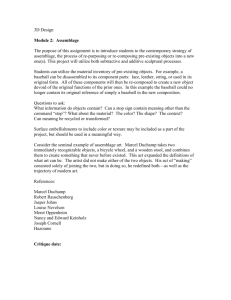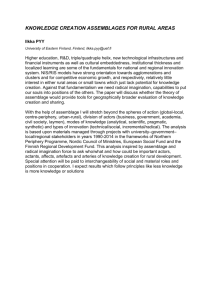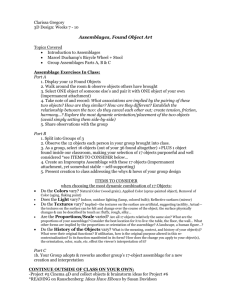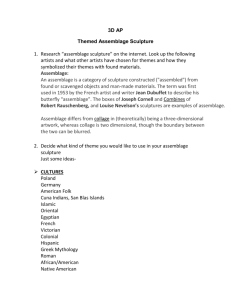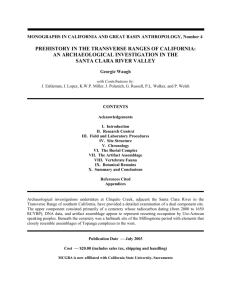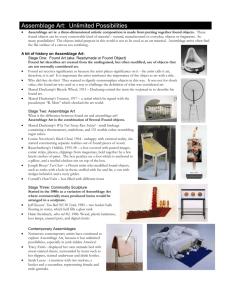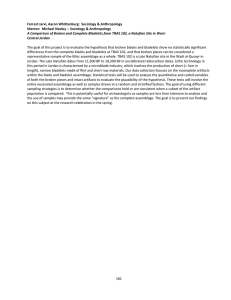Archaeology Research: 19th Century Pottery Assemblage, Newcastle
advertisement
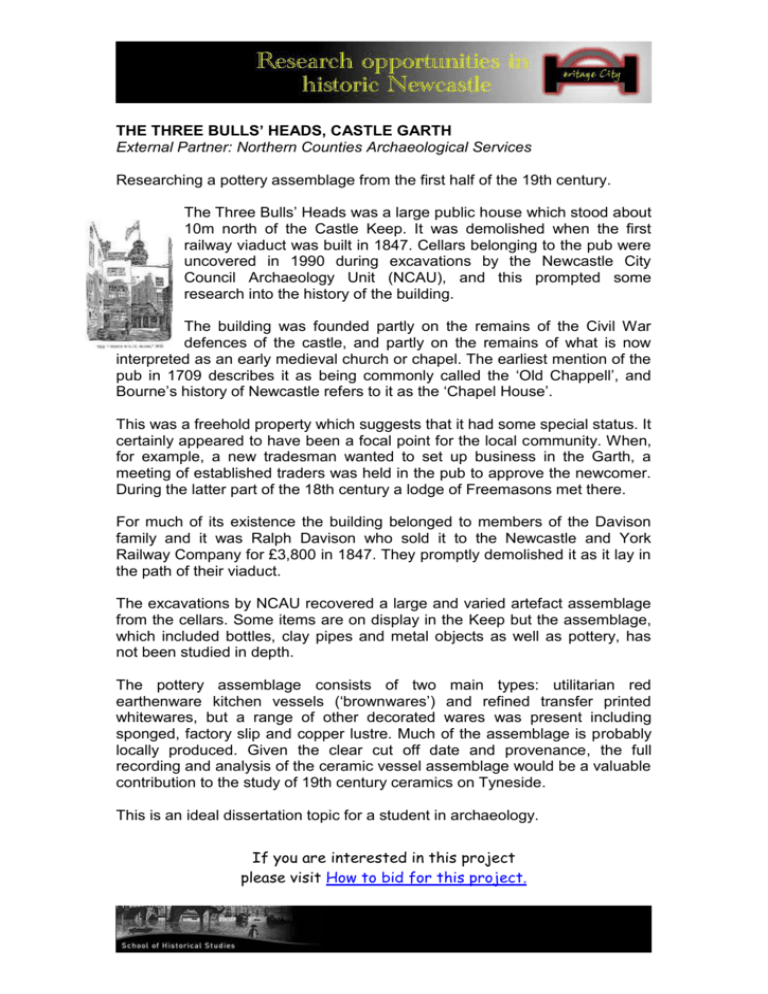
THE THREE BULLS’ HEADS, CASTLE GARTH External Partner: Northern Counties Archaeological Services Researching a pottery assemblage from the first half of the 19th century. The Three Bulls’ Heads was a large public house which stood about 10m north of the Castle Keep. It was demolished when the first railway viaduct was built in 1847. Cellars belonging to the pub were uncovered in 1990 during excavations by the Newcastle City Council Archaeology Unit (NCAU), and this prompted some research into the history of the building. The building was founded partly on the remains of the Civil War defences of the castle, and partly on the remains of what is now interpreted as an early medieval church or chapel. The earliest mention of the pub in 1709 describes it as being commonly called the ‘Old Chappell’, and Bourne’s history of Newcastle refers to it as the ‘Chapel House’. This was a freehold property which suggests that it had some special status. It certainly appeared to have been a focal point for the local community. When, for example, a new tradesman wanted to set up business in the Garth, a meeting of established traders was held in the pub to approve the newcomer. During the latter part of the 18th century a lodge of Freemasons met there. For much of its existence the building belonged to members of the Davison family and it was Ralph Davison who sold it to the Newcastle and York Railway Company for £3,800 in 1847. They promptly demolished it as it lay in the path of their viaduct. The excavations by NCAU recovered a large and varied artefact assemblage from the cellars. Some items are on display in the Keep but the assemblage, which included bottles, clay pipes and metal objects as well as pottery, has not been studied in depth. The pottery assemblage consists of two main types: utilitarian red earthenware kitchen vessels (‘brownwares’) and refined transfer printed whitewares, but a range of other decorated wares was present including sponged, factory slip and copper lustre. Much of the assemblage is probably locally produced. Given the clear cut off date and provenance, the full recording and analysis of the ceramic vessel assemblage would be a valuable contribution to the study of 19th century ceramics on Tyneside. This is an ideal dissertation topic for a student in archaeology. If you are interested in this project please visit How to bid for this project.


